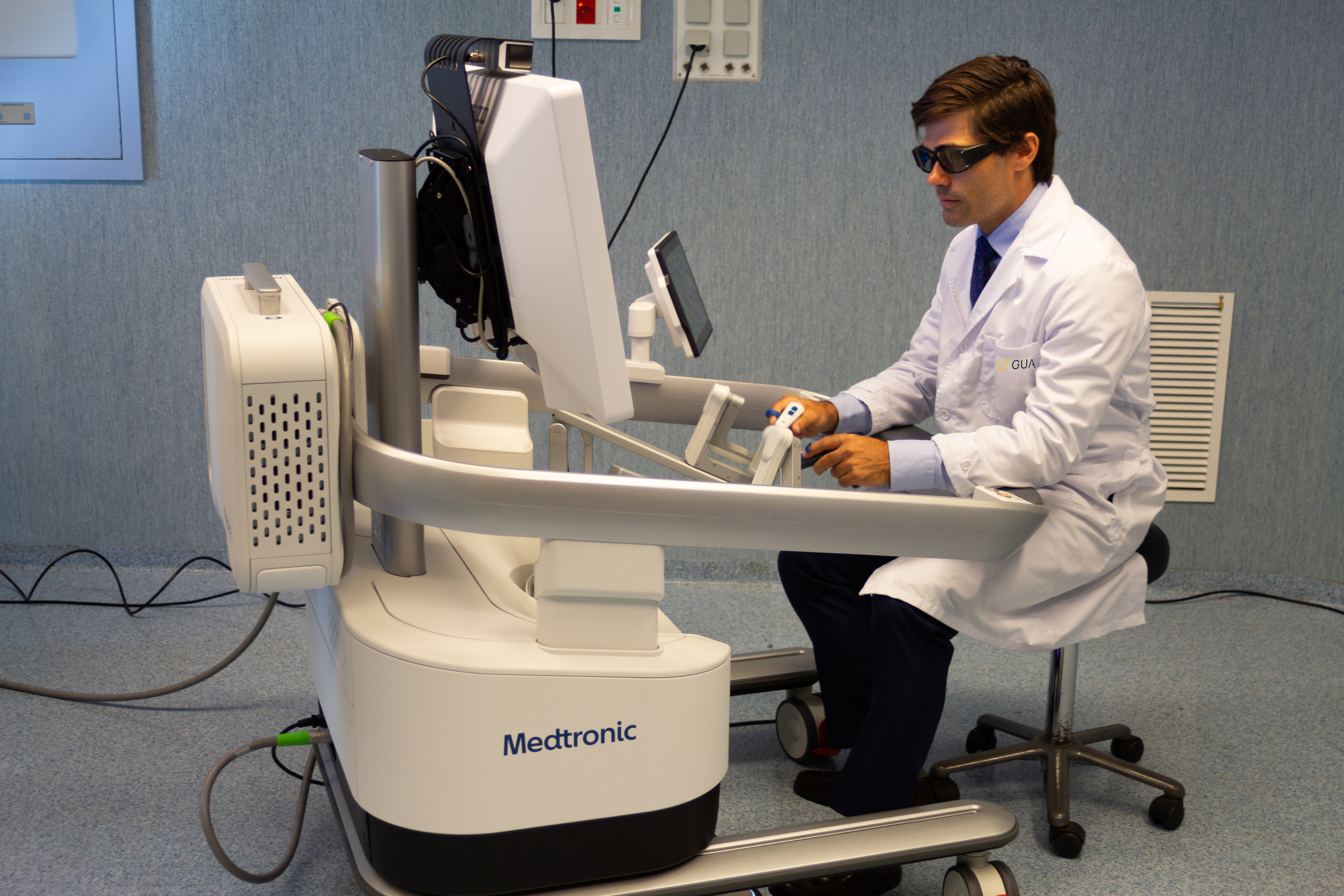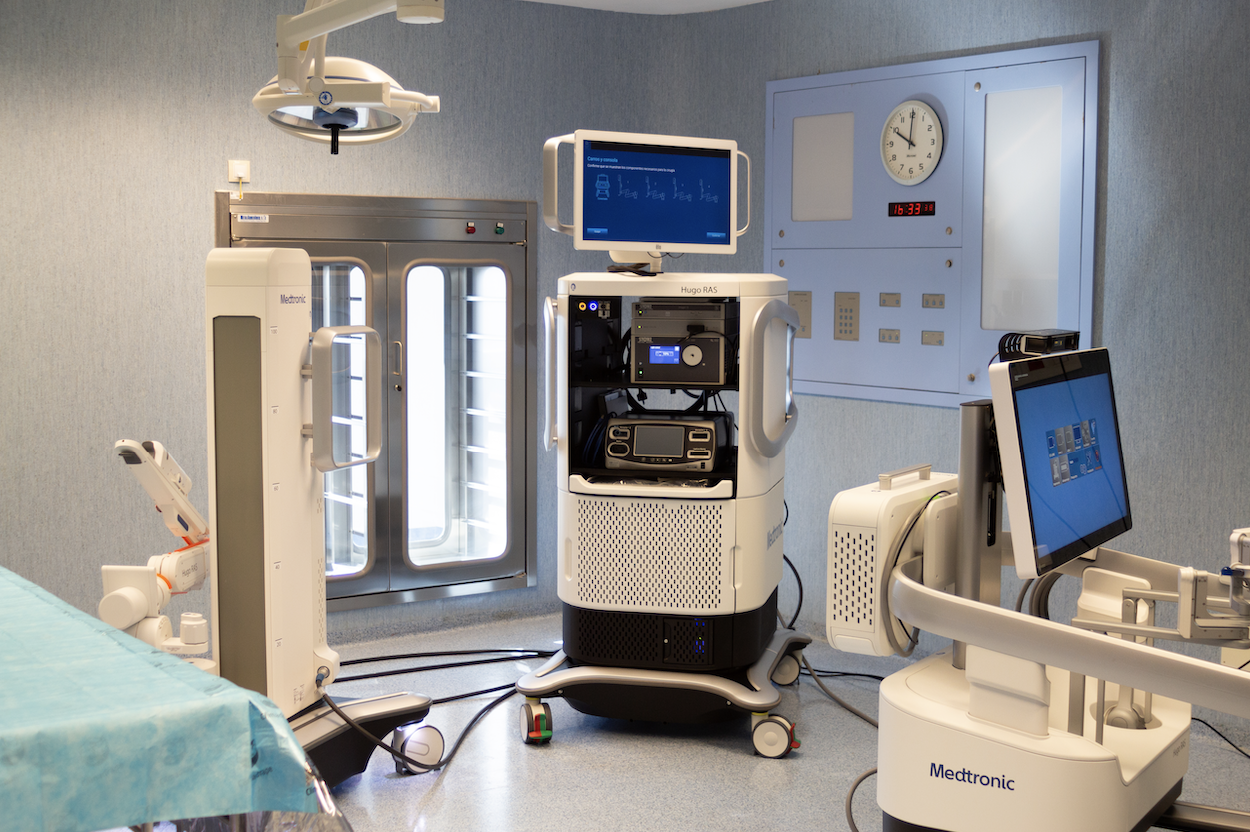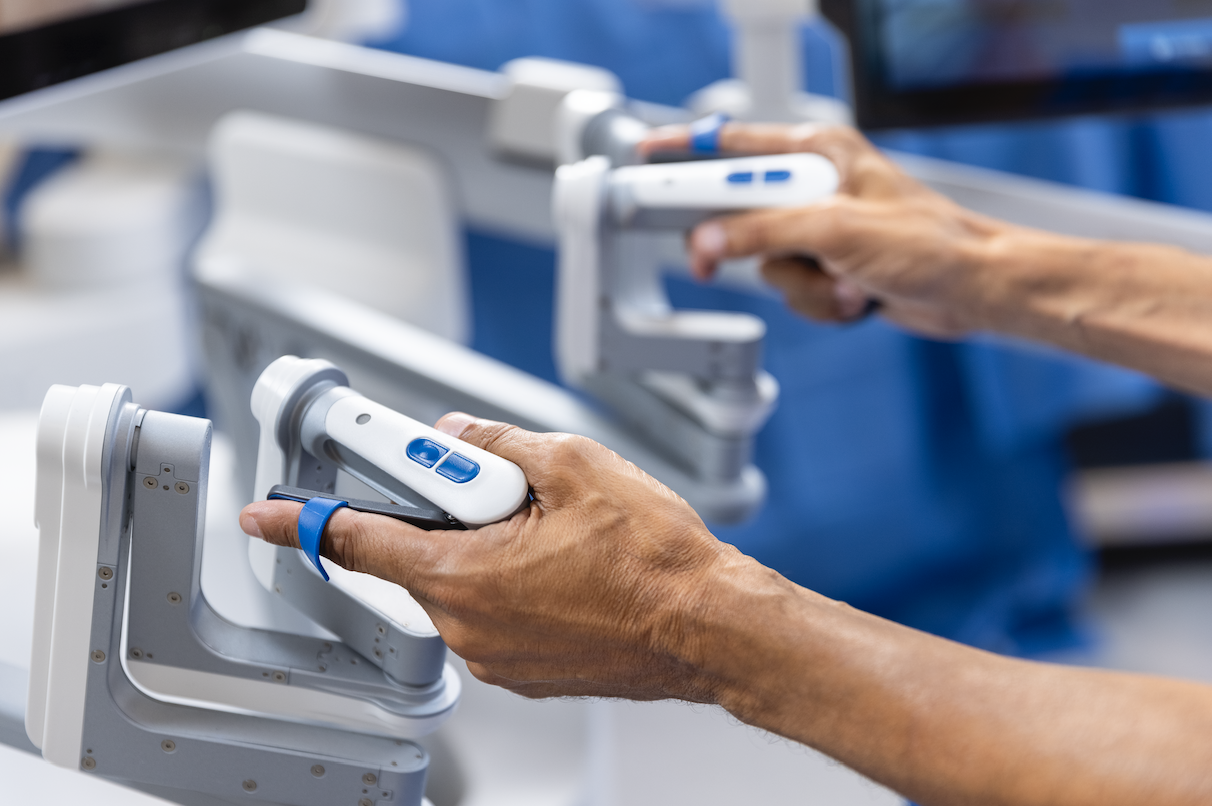
We are pioneers in the Canary Islands in incorporating the Hugo™ robot to our facilities to offer the most advanced robotic surgery.
What is robotic surgery?
Robotic surgery, or robot-assisted surgery, allows surgeons to perform a wide range of complex procedures with greater precision, flexibility and control compared to conventional techniques.
The surgeon operates by manipulating controls, seated at a console a few meters away from the patient, which replicate the movements of the patient's hand and execute them on delicate and precise surgical instruments. The robotic system filters and cancels out the tremor of the specialist's hand pulse and allows the instruments to perform 360º turns, something that the human hand is incapable of doing.
To these technical qualities is added a high-definition 3D visual system that provides the surgeon with a sensation of depth and offers an enlarged image of the organs he is operating on. This allows the specialist to enter inside the human body with a vision capacity never before achieved in the history of surgery. The specialist controls all the actions of the machine and its movements with the utmost delicacy to preserve the patient's organs as much as possible.


What is the Hugo™ RAS system?
The Hugo system™ RAS is a complete Robotic-Assisted Surgery (RAS) solution. It is a modular platform that moves easily from one operating room to another and combines state-of-the-art surgical technologies, high-definition 3D visualization and a powerful surgical video recording solution with training, service and optimization support. The system is designed to expand robotic-assisted surgery and bring the benefits of minimally invasive surgery to more surgeons and patients worldwide.
HUGO™ incorporates, for the first time, an artificial intelligence system to record the interventions and make a selection of the key moments of the surgery automatically. In addition, HUGO™ offers improved ergonomics that corrects and favors the correct position of the surgeon.
Our team has gone through the necessary training programs to become accredited in the use of the Hugo robot.™.
What are the advantages of the Hugo™ robot?
The Hugo system™ features sophisticated advances in the field of robotic surgery and numerous advantages:

What procedures in urology can be performed by robotic surgery?
The Hugo robotic system™ RAS is used in urology to perform a wide number of minimally invasive surgical procedures.
Hugo's modular design™ with several quadrants allows the different arms to be used independently, as well as to be adapted to the operating room space and the needs of each surgery.

